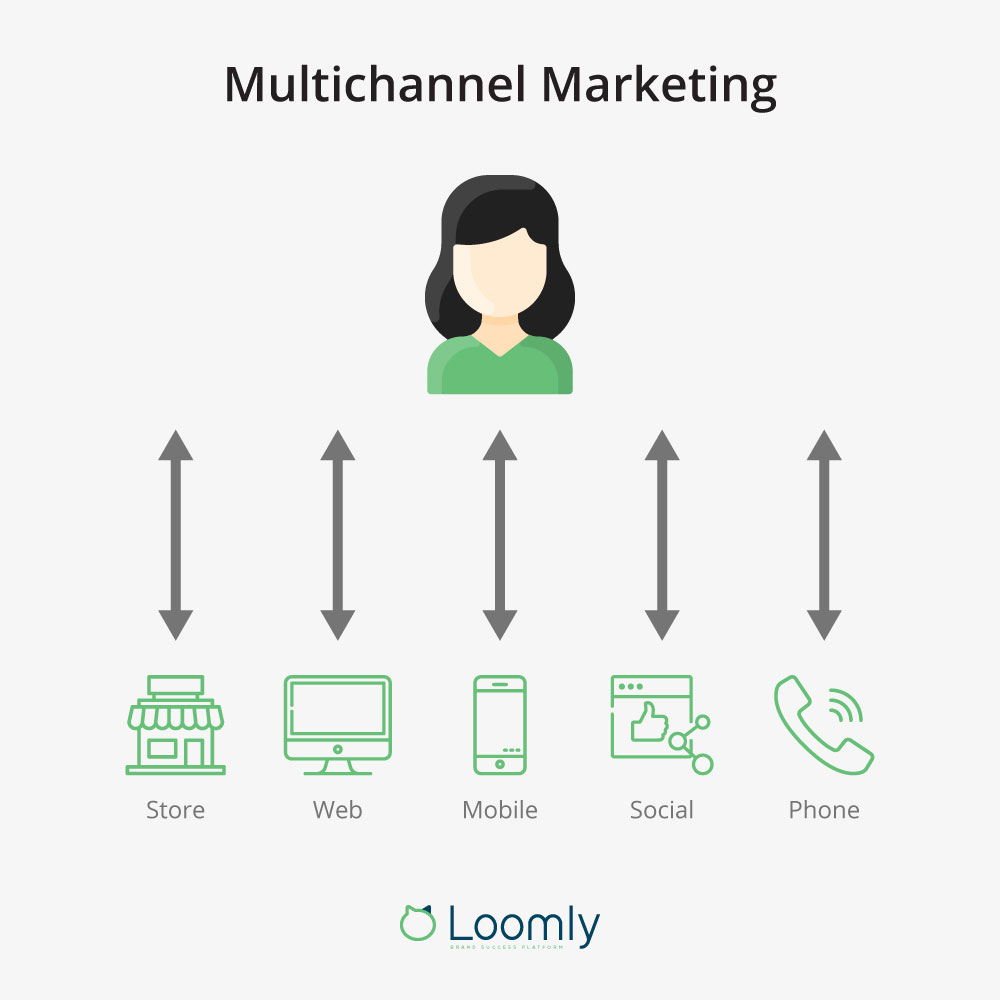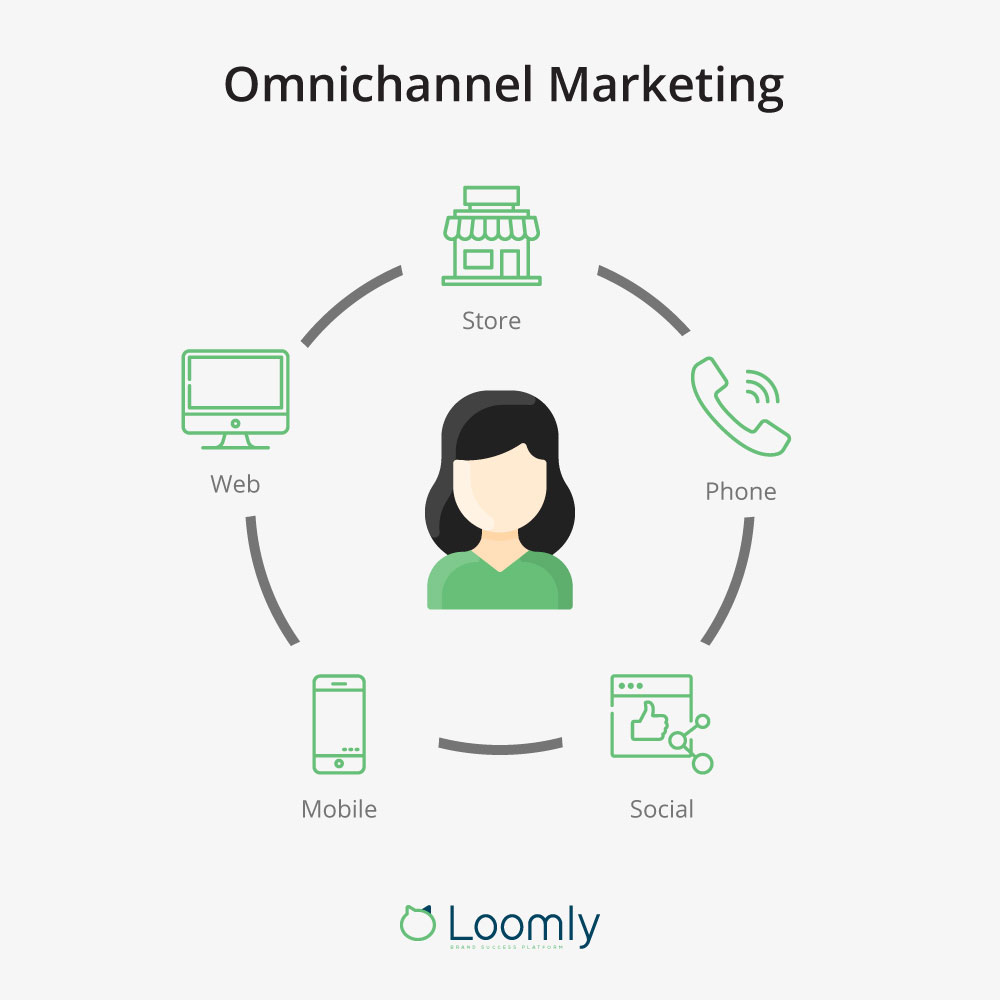Omnichannel Marketing: How To Deliver An Integrated Shopping Experience
Today, we are going to look at omnichannel marketing.
Specifically, we will explore:
- What omnichannel marketing is
- The difference between omnichannel and multichannel marketing
- The 4 exciting benefits of using it
- How you can start using omnichannel marketing
Let’s get started!
What Is Omnichannel Marketing?
Omnichannel marketing is a customer-focused marketing strategy; it aims to meet the customer at their chosen touchpoint and deliver a high-quality experience.
Put simply:
You create a marketing strategy that encompasses all of the areas where a customer would interact with your brand, and ensure they share a brand-consistent message.
This includes — but is not limited to — touchpoints like:
- Physical locations
- Social media
- Newsletters
- Blog content
- Live chats
- Customer service
This is a customer-led strategy because you put the customer first; you consider where they will interact with you and build your strategy around their needs and the highest value experience.
The goal of omnichannel marketing is to create a seamless experience. That is to say, all of the touchpoints are connected and work as one.
For example:
Let’s say a customer visits your website through a Facebook ad, adds an item to their cart, but leaves before they complete the purchase.
In an omnichannel strategy, the customer would be reminded to complete their purchase through:
- Facebook: it is the most relevant channel for this customer, so they would receive retargeted ads and perhaps a Messenger message.
- Email: the customer would receive an email conveying the same information in the Facebook ads (but tailored to fit email communication).
- Other social media: the customer is a social media user, so you may reuse retargeting options on other platforms (informed by their demographics).
You can already see that this is more nuanced than the closely-related multichannel marketing approach. But, let’s take a closer look at the exact difference.
The Difference Between Omnichannel And Multichannel Marketing
There is often some confusion between omnichannel and multichannel marketing.
We get it:
The concepts are quite similar; both use multiple channels to connect with potential customers.
However, they differ drastically in practice. Let’s take a closer look:
Multichannel marketing is when a brand uses several channels to push a message to that platform’s users. Like, say, posting updates on Facebook and Instagram.
This customer journey begins with the brand.
The brand decides what it wants to say; they then adjust the message to make it fit the platform; they then promote it to the platform’s users.
Multichannel marketing relies on the user being there to receive the message.
Here is how that looks in visual terms:

Omnichannel marketing is when a brand meets a potential customer at their chosen touchpoint; they create a seamless experience with multiple points of entry.
The journey begins with the customer, as the brand must ask:
- Where will the customer interact with us?
- How can we ensure they receive a consistent message?
- How can we make this as relevant to them as possible?
The brand still has a message to share, but they have chosen to tailor it to the needs of each customer at each touchpoint.
Here is how that looks visually:

We are not here to say which strategy is better. Both of them have their uses, in the right context, at any given time in the marketing process.
Instead:
We want to talk about the incredible opportunities for branding, growth, and customer experience that omnichannel marketing offers.
Let’s take a look at some of the major benefits.
The 4 Exciting Benefits Of Omnichannel Marketing
There are four exciting benefits of using omnichannel marketing:
- Better analytics data
- Better, more informed campaigns
- More efficient marketing spend
- More revenue
Here they are in more detail:
1. Better Analytics Data
Omnichannel marketing provides you with more sources to collect customer data.
Because you will have a better presence at all touchpoints, you can gather information from places like:
- Tracking pixels
- Cookies
- Shopping carts
- Device IDs
- CTRs and open rates
Doing this gives you a better understanding of what the entirety of your customer base is doing. You can also pinpoint where new data and customers are coming from.
Which brings us squarely to the next benefit.
2. Better, More Informed Campaigns
This data will help you build better marketing campaigns.
Specifically, you will be able to optimize your strategy at each touchpoint.
For example, you could:
- Increase personalization.
- Create more relevant content.
- Reduce marketing funnel friction.
- Identify email (or information) capture points.
- Improve website flows.
Better still, you will have a clearer picture of what is (and what is not) working.
If there is a part of your campaign you can measure, omnichannel marketing can help you further understand and hone it.
This, in turn, will put your marketing dollars to better use.
3. More Efficient Marketing Spend
Omnichannel marketing provides a better insight into your overall marketing ROI.
Through greater analytics, you can determine which channels:
- Generate the most revenue.
- Need to be improved.
- Need to be discarded.
- Should be doubled-down on.
This is incredibly useful if you have touchpoints on social media, where it is notoriously tricky to efficiently calculate your exact return on investment.
All of this allows you to better allocate your marketing budget, and adjust the tasks your marketing team spends their time on.
4. Generate More Revenue
Finally:
There is evidence to suggest that omnichannel marketing can have a direct, positive impact on your revenues.
Harvard Business Review analyzed retail businesses with both a physical and online presence. They found customers acquired and engaged by omnichannel marketing spent:
- 4% more in store.
- 10% more online.
These may not be earth-shattering figures, but they are a clear indication that sharing a consistent message across touchpoints has an impact on customers.
So, how do you start using omnichannel marketing for your organization?
How To Start Using Omnichannel Marketing In Your Strategy
Omnichannel marketing is unique to each company.
You will need to discuss and establish what is important with various stakeholders, such as those in these departments:
- Product
- Sales
- Customer success
- Customer service
- Marketing
These conversations should center on finding areas to “meet” your customers.
Specifically, you will need to define:
- Where you need to improve in your current strategy.
- What touchpoints need to be used in your omnichannel strategy.
You may also want to consider:
- What touchpoints currently receive no attention?
- What touchpoints are you missing out on?
- What touchpoints do your currently over-invest in?
- What touchpoints are most important to your core customers?
The best advice we can share here is to start small, set benchmarks for success, and experiment early and often.
This is a new concept in marketing, at least, as far as marketing tactics go.
As such, there is no clearly defined right or wrong; there is just what works for your business.
Find one area, improve, and see what the result is. Then repeat in the next area. Wash, rinse, and repeat until you find the system that works for you.

Manage all your social media accounts in one place.
Craft, schedule, & auto-post content to all your social channels, then track analytics and manage interactions from a single, easy-to-use dashboard.
Omnichannel Marketing In A Nutshell
Omnichannel marketing is a customer-focused marketing strategy; it aims to create a seamless, brand-consistent experience.
Although similar, omni- and multi-channel marketing are different. In simple terms:
- Multichannel marketing: is a journey that begins with the brand and looks to push a message out through various channels.
- Omnichannel marketing: is a journey that begins with the customer and looks to meet them at their chosen touchpoints.
Omnichannel marketing has four key benefits:
- You can acquire better analytics data
- You can implement better-informed marketing campaigns
- You can work more effectively and better understand your marketing ROI
- You can generate more revenue
When using omnichannel marketing, you need to communicate with key stakeholders and look for key areas of your current strategy where you can better cater to your customers.



